July 2 & July 29, 2009
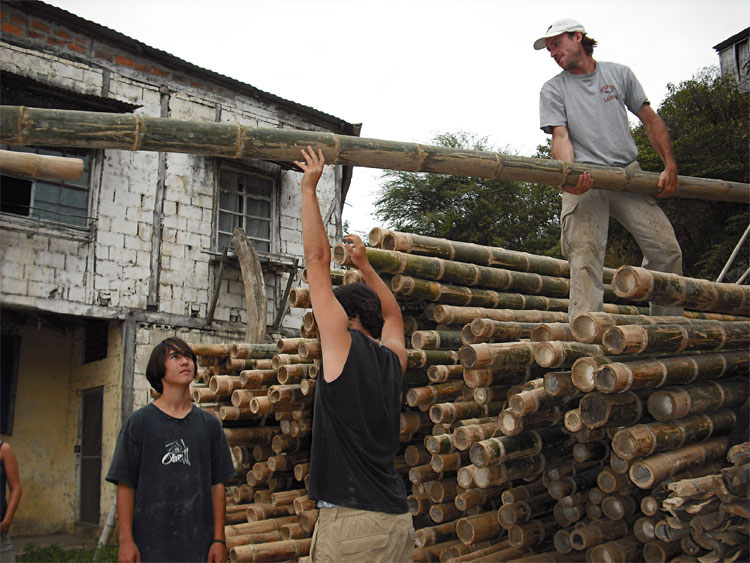

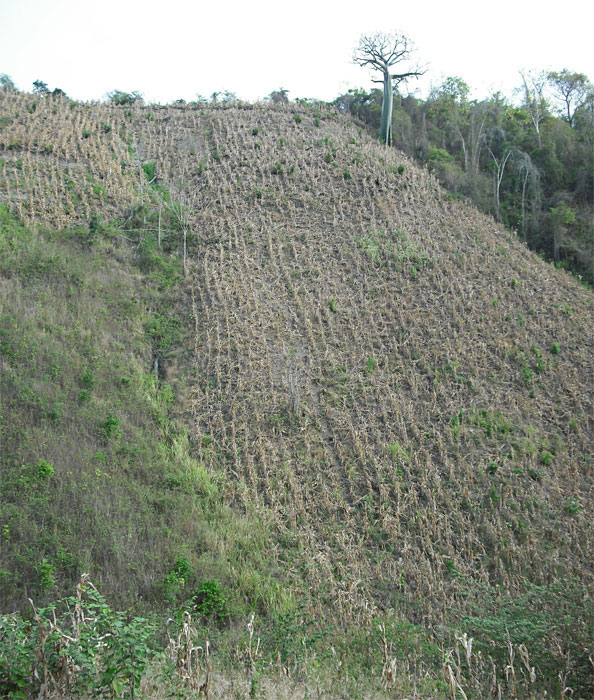

In one long epic day we drove in to the Planet Drum land with a load of Bamboo (Caña) to begin the first structure for the Bioregional Sustainability Institute: a tent platform. This was the first trip with a motorized vehicle. Chino (the one and only, the incredible) drove his full-sized diesel truck. Along the way we cleared eroding dirt off of the road’s harrowing decent into the watershed, which shares the Planet Drum land and part of the cattle rancher’s land that we have to travel through, and drains into the Pacific Ocean five miles to the west. There were two to three problem spots where the side-cut road that was carved into the steep dirt slope needed the most shoveling work in order to be passable.
Fortunately there were enough of us to rotate shifts in order to keep the pick axe and shovels in motion nearly the entire time.
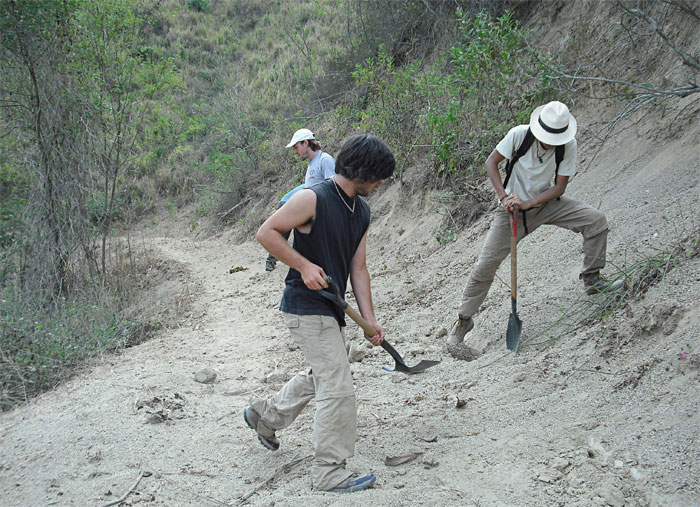
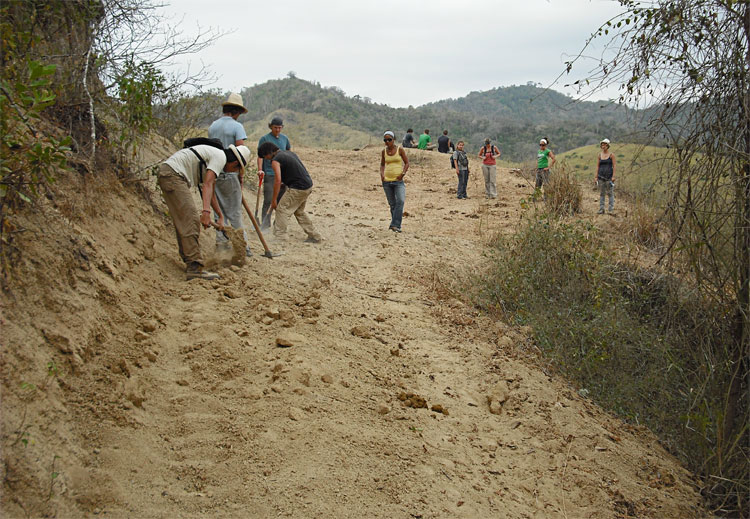



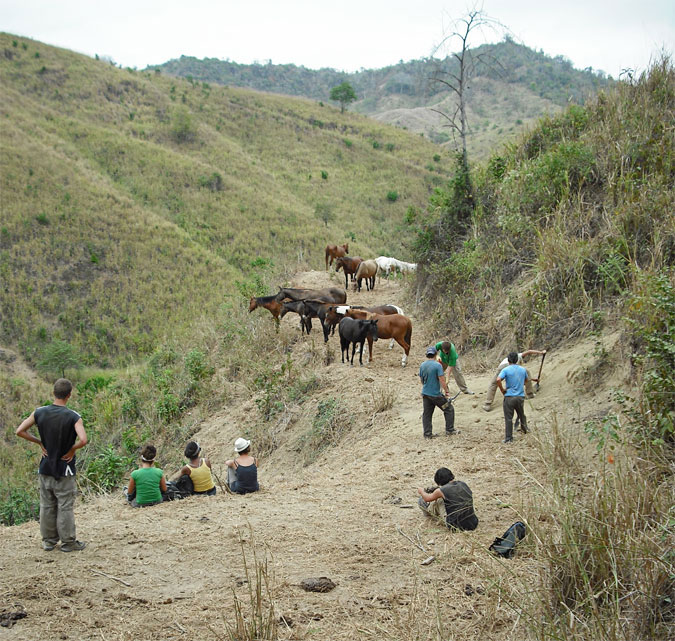
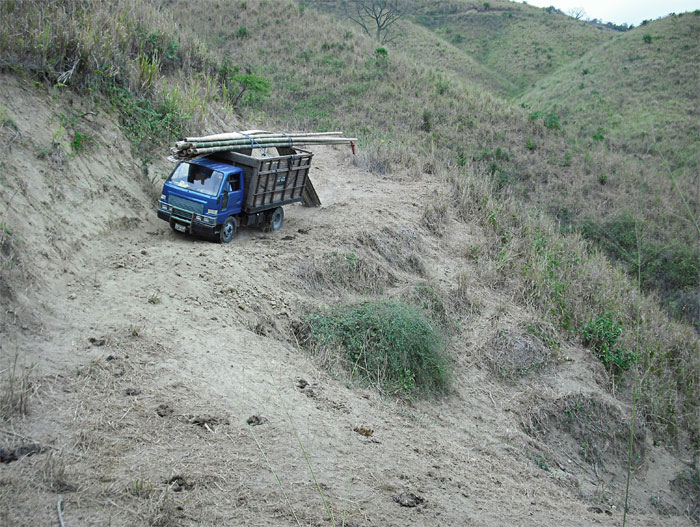
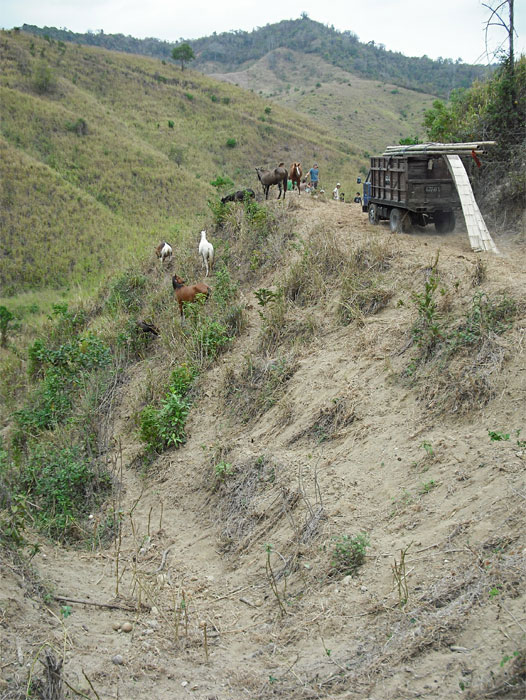
We arrived at the border of the land with the load of cargo mid-morning, already sweaty and dirty. Because of the terrain, we can’t actually drive onto the land yet. A five meter deep and twelve meter wide seasonal river drainage prevents complete access. And until a bridge is constructed we will have to settle with arriving on the far side of this barrier and then walking in.

After deciding on the location for the platform based on convenience, aesthetic appeal and most importantly open space with minimal undergrowth to clear, a small group of volunteers began to clear the area. The bamboo was unloaded and we started cutting it into pieces.
We decided on a 4 X 2.5 meter platform, raised off of the ground approximately one half meter. Bamboo is an excellent building material because its strength to weight ratio and because, if cleverly assembled, requires a minimal usage of nails. So far we’ve avoided the use of nails entirely. Perhaps later they will be necessary?

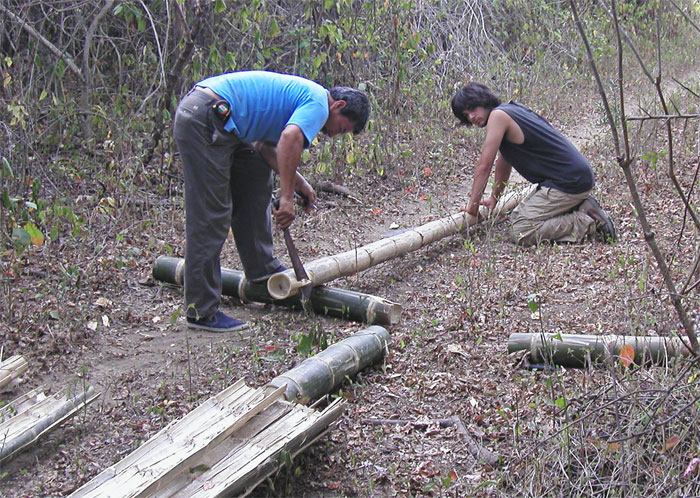
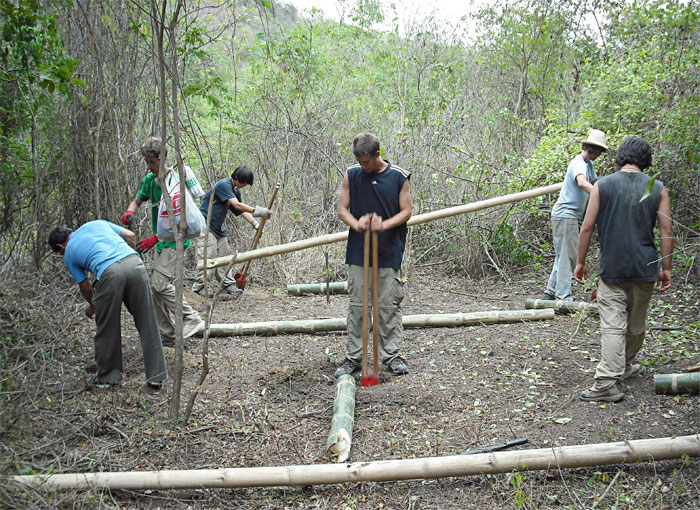
Because of the time it took to simply get the truck to the land, only a small portion of the construction of the tent platform was completed on the first visit. The area was cleared, a few of the holes were dug, and some of the bamboo supports were cut and put temporarily into place. Regardless, the fact that we made it into the land on that bad road with the supplies was momentous in my opinion.

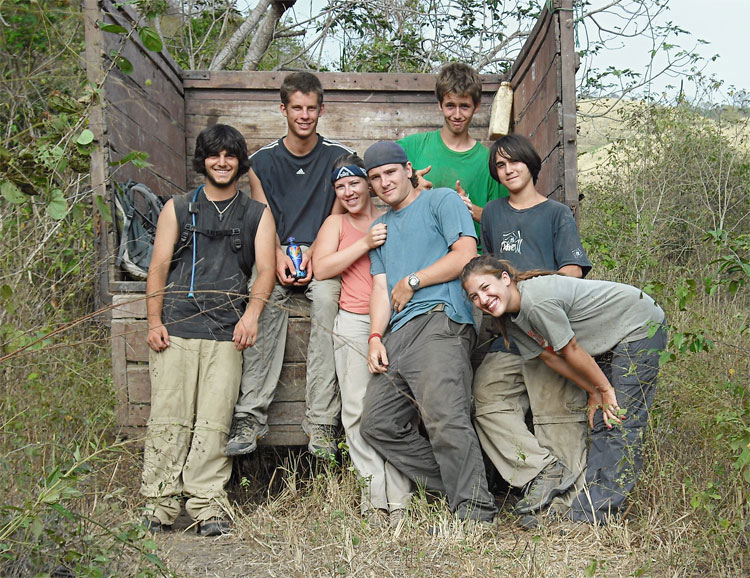
Several weeks later we returned to continue working on the tent platform. It felt good to arrive at the site fresh with energy. Because some of the work had been started already, we jumped right in.

The first goal was to get another horizontal support in the ground. The ground here is extremely hard and we needed three more holes dug. Three more bamboo supports were cut along with the cross beam. The supports that were started last time needed to be leveled and squared a bit, and then we filled in the holes around the bamboo, locking the supports in place.
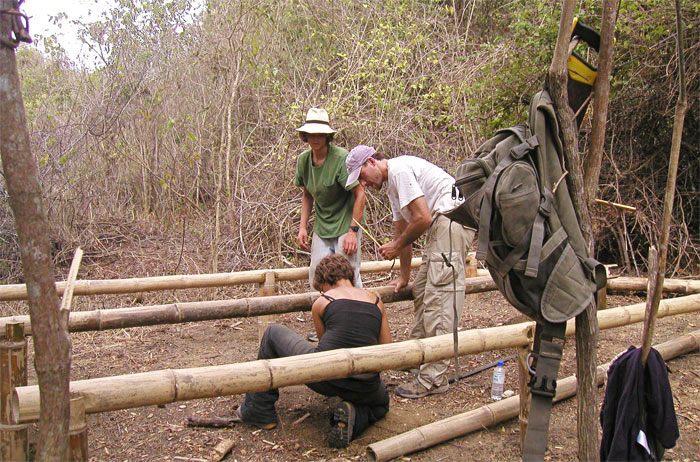
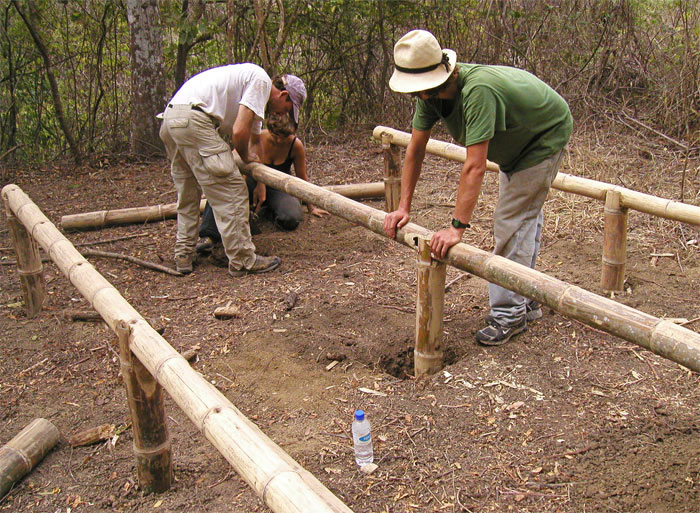
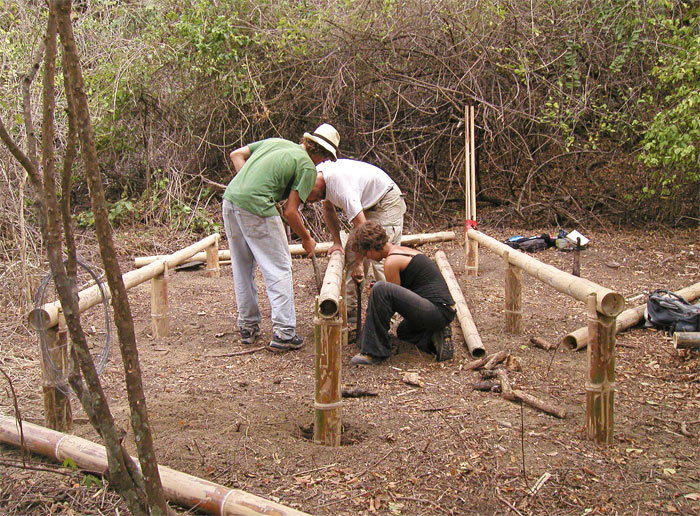
With the remaining bamboo tubes we cut cross sections, which will serve as struts for the floor. Caña picada as it’s called is bamboo split lengthwise and flatted out, like the flattened bark of a tree. This will be placed across the struts and serve as the floor.
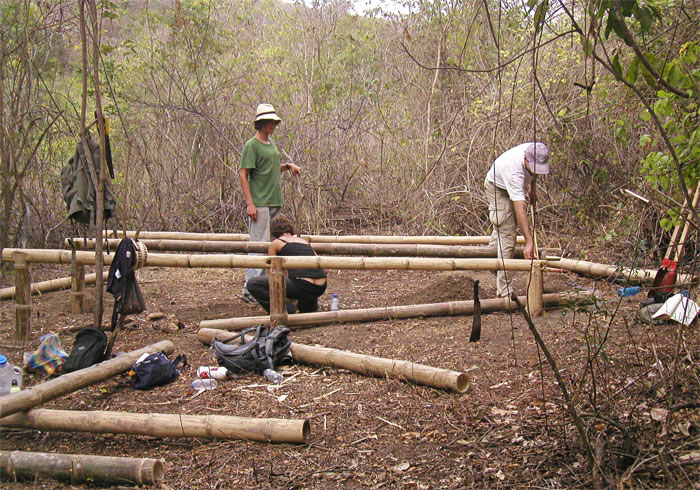
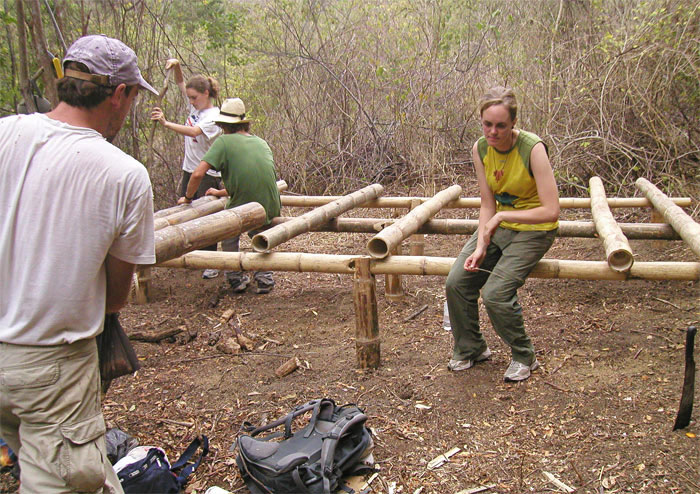
Before we had to leave, all three of the supports were set in the ground and packed in with dirt to hold them in place. The struts were cut to length, but we ran out of time to properly attach them to the base supports. That and flooring will have to wait for next time…
Pásalo bien,
Clay

Thank you for your sharing. I am worried that I lack creative ideas. It is your article that makes me full of hope. Thank you. But, I have a question, can you help me?
Can you be more specific about the content of your article? After reading it, I still have some doubts. Hope you can help me.